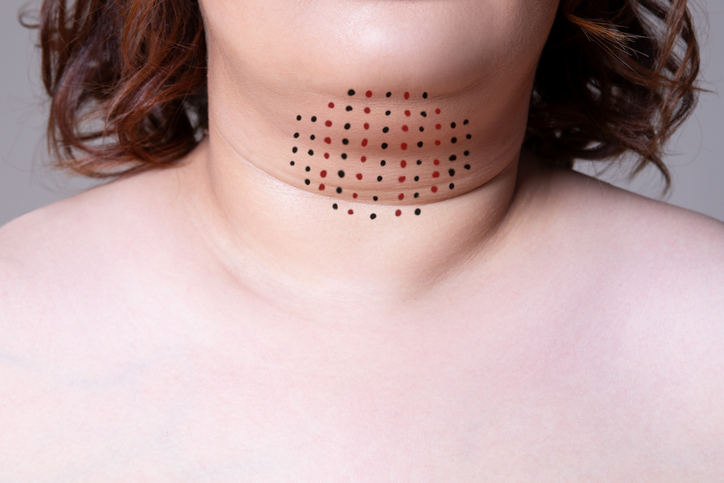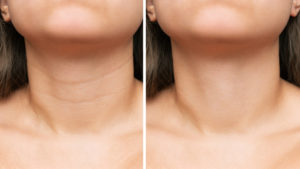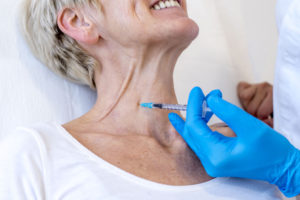
How fat-reducing treatments can be an option for chin augmentation
Learn how fat-reducing injections work as an alternative to chin liposuction for those considering options for chin augmentation procedures.
Dr Michael Rich is a specialist dermatologist who has been performing tumescent liposuction for over 30 years. Find out if Liposuction is suitable for you at ENRICH Clinic.
At ENRICH Clinic, we have a wide range of dermatological and cosmetic body treatments tailored to individual body and patient needs.
At ENRICH Clinic, our treatments are performed by our medical team consisting of doctors, nurses, and dermatologists and are tailored to each patient’s skin health needs.
ENRICH Clinic is committed to your skin health and well-being with a range of dermatological & cosmetic treatments tailored to the individual. Our treatments are performed by our medical team consisting of doctors, nurses, and dermatologists.
Skin health is essential for everyone. ENRICH Clinic has a wide range of technologies and dermatological solutions to help you achieve your skin care goals.
Platysmal bands, those vertical lines that appear on our necks as we age, are a common sight after 55. While completely harmless and pose no health risks, let’s be honest: sometimes, their aesthetics aren’t exactly our cup of tea.
The good news is there are several ways to treat these bands– both surgical and non-surgical. The following sections will give an overview of these treatment options. But first, let’s discuss the causes of these bands to understand better how the treatments work.
The platysma muscle plays two main roles in our bodies: facial expressions and neck support. It helps pull down the corners of your mouth, creating expressions like sadness, surprise, and even horror. It also assists in opening your mouth by slightly depressing the jaw. The platysma can also play a role in tensing the skin of the neck and supporting the superficial veins. This helps to maintain the shape of the neck and facilitate blood flow.
As we age, the platysma muscle can weaken and lose its elasticity. This can lead to the formation of visible bands on the neck, known as platysmal bands.
While time plays a significant role, several other factors contribute to the formation of these bands, such as:
Please note that these are for informational purposes only. If you’d like to know more about these procedures, plastic surgeons are your go-to specialists. We do not offer these treatments at ENRICH clinic.
A neck lift, medically called platysmaplasty, is the most common surgical procedure for platysmal bands.

The procedure is typically performed under general anesthesia and can take anywhere from two to four hours. The specific technique used will vary depending on your needs but generally involves:
Recovery from a neck lift typically takes two to four weeks. During this time, you may experience swelling, bruising, and discomfort.
Also, note that neck lifts are surgical procedures with certain risks, such as bleeding, infection, and scarring. You must be in good overall health to be a candidate for a neck lift. Certain medical conditions can increase the risks of surgery. Discuss these risks with your doctor before deciding if a neck lift is right for you.
Closed platysmotomy, or percutaneous platysmal band myotomy, is a less invasive surgical procedure than platysmaplatsy used to weaken or sever the platysmal bands, improving the definition and smoothness of the neck contour.
Unlike traditional neck lifts involving incisions, closed platysmotomy uses a needle-based approach. The surgeon inserts a small needle under the skin and uses a particular instrument to target and sever the platysmal bands. Different techniques and devices exist, such as lasers or threads, but the overall goal remains: severing the bands without incisions.
Because the procedure is less invasive than traditional neck lifts, percutaneous platysmotomy typically takes less time. There’s also less downtime since there are fewer post-operative restrictions.
But note that closed platysmotomy may not be for you if you have severe skin laxity or advanced signs of aging in the neck.
Surgical denervation is a relatively new and less invasive technique than traditional neck lift surgeries. It involves severing the nerve branches that control the platysma muscle, specifically the cervical branch of the facial nerve. This weakens the muscle, preventing it from contracting and forming visible bands on the neck.
Here’s how it works:
As a result, the platysma bands relax and become less visible, leading to a smoother and more youthful-looking neck.
At ENRICH Clinic, we can help you with non-surgical solutions for platysmal bands that suit your particular situation.
Muscle-relaxant injections reduce the tautness of the platysmal bands in the neck. The treatment involves injecting a minimal prescription-only muscle relaxant directly into the platysmal bands, performed by one of our cosmetic doctors.

One session typically takes only about 15-30 minutes and requires no anesthesia. There is usually no downtime or recovery period associated with the injections.
But, this treatment version requires regular injections to maintain the effect. The effects typically last for three to four months, after which the muscle resumes normal activity, and the bands may become visible again.
Another popular non-surgical approach to addressing platysmal bands is dermal fillers. These injectable solutions add volume and fullness to the treated area to:
The treatment involves injecting small amounts of filler into specific neck areas, targeting the depressions around the platysmal bands and areas requiring additional volume. The procedure typically takes 30-60 minutes and requires minimal discomfort due to numbing cream or local anesthesia.
While convenient and practical, dermal fillers for platysmal bands are temporary solutions. The effects typically last for 6-18 months, depending on the type of filler used and individual factors. So, you may need repeat injections to maintain the desired results.
Radiofrequency (RF) treatment works by delivering controlled radiofrequency waves to the deeper layers of the skin, stimulating collagen production and tightening the underlying muscles.
During the procedure, a handheld device emits RF energy that penetrates the skin, targeting the platysma muscle and surrounding tissues. This heat stimulates collagen production, tightens existing collagen fibres and improves skin texture.
Several types of radiofrequency devices and techniques can be used for platysmal bands, each with its own unique characteristics:
Treatment sessions typically last 30-60 minutes, depending on the size of the treated area and the device used. Topical numbing cream may be applied to your skin for added comfort, but anesthesia is usually unnecessary.
While radiofrequency treatment can offer a noticeable improvement in the appearance of platysmal bands, the newly formed collagen gradually breaks down over time. To maintain the desired effects, you may need to repeat treatments every 6-18 months.
PDO thread lifts are another minimally invasive option for managing platysmal bands. They are known for their biocompatibility and ability to dissolve within 6-12 months. During this procedure, your practitioner will insert tiny threads with a needle and place them strategically to anchor and lift the sagging skin in your neck.
The procedure usually takes around 30-60 minutes and requires minimal anesthesia, often just topical numbing cream. There is minimal downtime; you can return home shortly after the treatment.
You may need repeat treatments after 12 to 24 months to keep the neck bands at bay.
While fractional non-ablative laser rejuvenation and Intense Pulsed Light (IPL) do not directly address the bands themselves, they can improve overall skin tone and texture, making them appear less prominent.
The best treatment for platysma bands depends on many factors, so manage your expectations when considering any treatment. Remember, the skin naturally ages, and collagen production significantly decreases after our 20s. While various treatments can offer improvement, they won’t completely stop the aging process.
To determine your best option, consult one of our qualified healthcare professionals. They can assess your case, explain the limitations of different treatments based on your skin’s current state, and answer any questions.
Let’s discuss your options in more detail – book your consultation today.
*With all surgeries or procedures, there are risks. Consult your physician (GP) before undertaking any surgical or cosmetic procedure. Please read the consent forms carefully and be informed about every aspect of your treatment. Surgeries such as liposuction have a mandatory seven-day cooling-off period to give patients adequate time to be sure of their surgery choice. Results may also vary from person to person due to many factors, including the individual’s genetics, diet and exercise. Before and after photos are only relevant to the patient in the photo and do not necessarily reflect the results other patients may experience. Ask questions. Our team of dermatologists, doctors and nurses are here to help you with any of your queries. This page is not advice and is intended to be informational only. We endeavour to keep all our information up to date; however, this site is intended as a guide and not a definitive information portal or in any way constitutes medical advice.
"*" indicates required fields
Combining Dr Rich’s dermatological skill with his knowledge of restorative skin regimes and treatments, the ENRICH range is formulated to help maintain and complement your skin. Our signature Vitamin C Day & Night creams are now joined by a Vit A, B,&C Serum and a B5 Hyaluronic Gel, both with hydration properties and much, much more.

Learn how fat-reducing injections work as an alternative to chin liposuction for those considering options for chin augmentation procedures.

We talk about three non-surgical gummy smile treatments, including dermal fillers, anti wrinkle injections, and TADs.

Learn the difference between hypertrophic scars and other types of scars, plus treatments that may help with their appearance.
Subscribe to the ENRICH newsletter and receive latest news & updates from our team.
Enrich Clinic acknowledges the Traditional Lands of the Wurundjeri Woi Wurrung and Bunurong peoples of the East Kulin Nations on which we work and trade. We pay respect to their Elders past, present and emerging. We extend our acknowledgement and respect to the LGBTQIA+ community who we welcome and support. Read our full Acknowledgement Statement here
